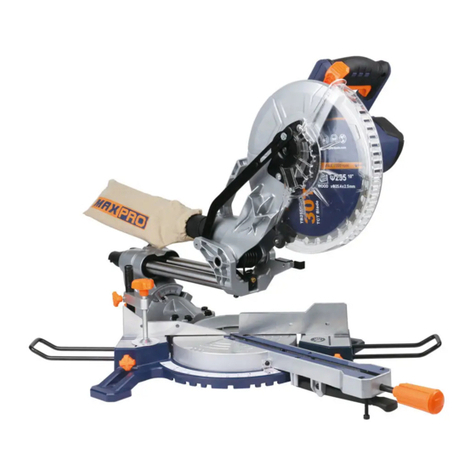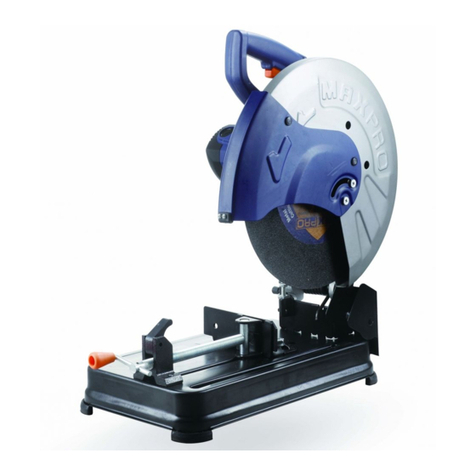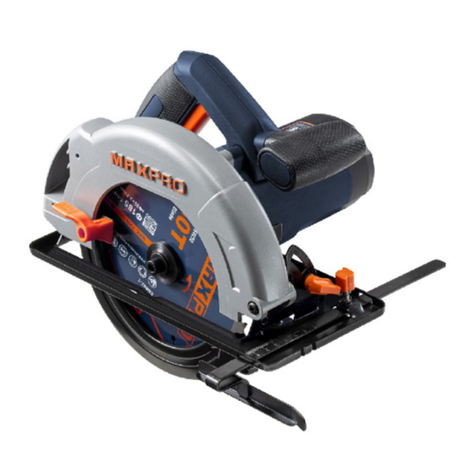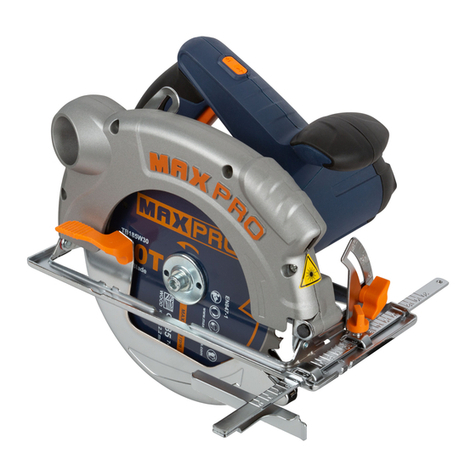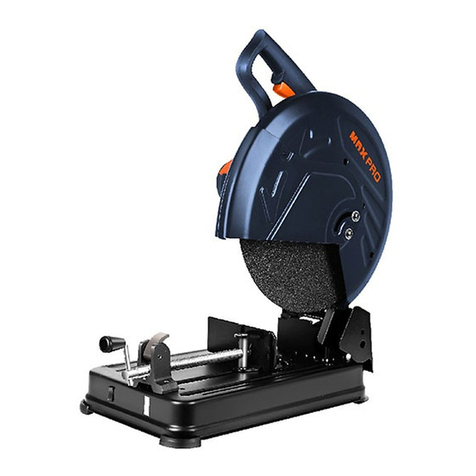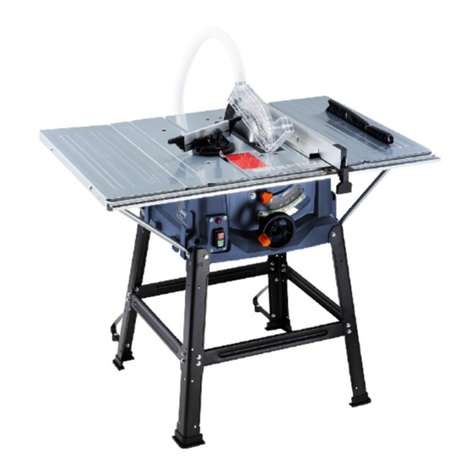
5GB
GENERAL
1. Only use this tool for cung wood, cung aluminum is possible only with a special separate saw blade.
2. Always saw asingle work piece (work pieces placed one on the other or next to each other cannot be
properly clamped which may result in saw blade binding or work piece slipping during sawing).
3.Inrush currents cause short-me voltage drops; under unfavorable power supply condions, other
equipment may be affected (if the system impedance of the power supply is lower than 0,295 + j0,184
Ohm, disturbances are unlikely to occur); if you need further clarificaon, you may contact your local power
supply authority.
4.Always disconnect plug from power source before making any adjustment or changing any accessory.
5.This tool should not be used by people under the age of 16 years.
6.This tool is not suitable for wet cung.
OUTDOOR USE
When used outdoors, connect the tool viaafault current (FI)circuit breaker with atriggeringcurrent of
30 mA maximum, and only use an extension cord which is intended for outdoor use and equipped with a
splash proof coupling-socket.
BEFORE USE
1.Always check that the supply voltage is the same as the voltage indicated on the nameplate of the tool.
2.Use completely unrolled and safe extension cords with a capacity of 16 Amps (U.K. 13 Amps).
3.Always mount the tool on a flat and stable working surface (e.g. workbench).
4.Wear protecve glasses, hearing protecon, and protecve gloves.
5.Dust from material such as paint containing lead, some wood species, minerals and metal may be harmful
(contact with or inhalaon of the dust may cause allergic reacons and/or respiratory diseases to the
operator or bystanders); wear a dust mask and work with a dust extracon device when connectable.
6.Certain kinds of dust are classified as carcinogenic (such as oak and beech dust) especially in conjuncon
with addives for wood condioning; wear adust mask and work with adust extracon device when
connectable.
7.Follow the dust-related naonal requirements for the materials you want to work with.
8.Do not work materials containing asbestos (asbestos is considered carcinogenic).
9.Never use the tool without the original protecon guard system.
10.Check the protecve guard for proper closing before each use.
11.Do not operate the saw if the protecve guard does not move freely and close instantly.
12.Never clamp or e the protecve guard into the open posion.
13.Always firmly clamp the work piece (do not work with pieces that are too small to clamp).
14.Always support the free ends of a long work piece.
15.Never allow another person to hold or support the work piece while working; use the saw table
extension.
16.Never use the tool without the table insert; replace a defecve or worn table insert
17.Remove all obstacles on top of as well as underneath the cung path before you star.t cung.
18.Avoid damage that can be caused by screws, nails and other elements in your work piece; remove them
before you start working.
ACCESSORIES
1.Never use grinding/cung discs with this tool.
2.MAXPRO can assure flawless funconing of the tool only when the correct accessories are used which can
be obtained from your MAXPRO dealer.
3.For mounng/using non-MAXPRO accessories observe the instrucons of the manufacturer concerned.
4.Use only accessories with an allowable speed matching at least the highest no-load speed of the tool.
5.Never use saw blades made of high speed steel (HSS).
